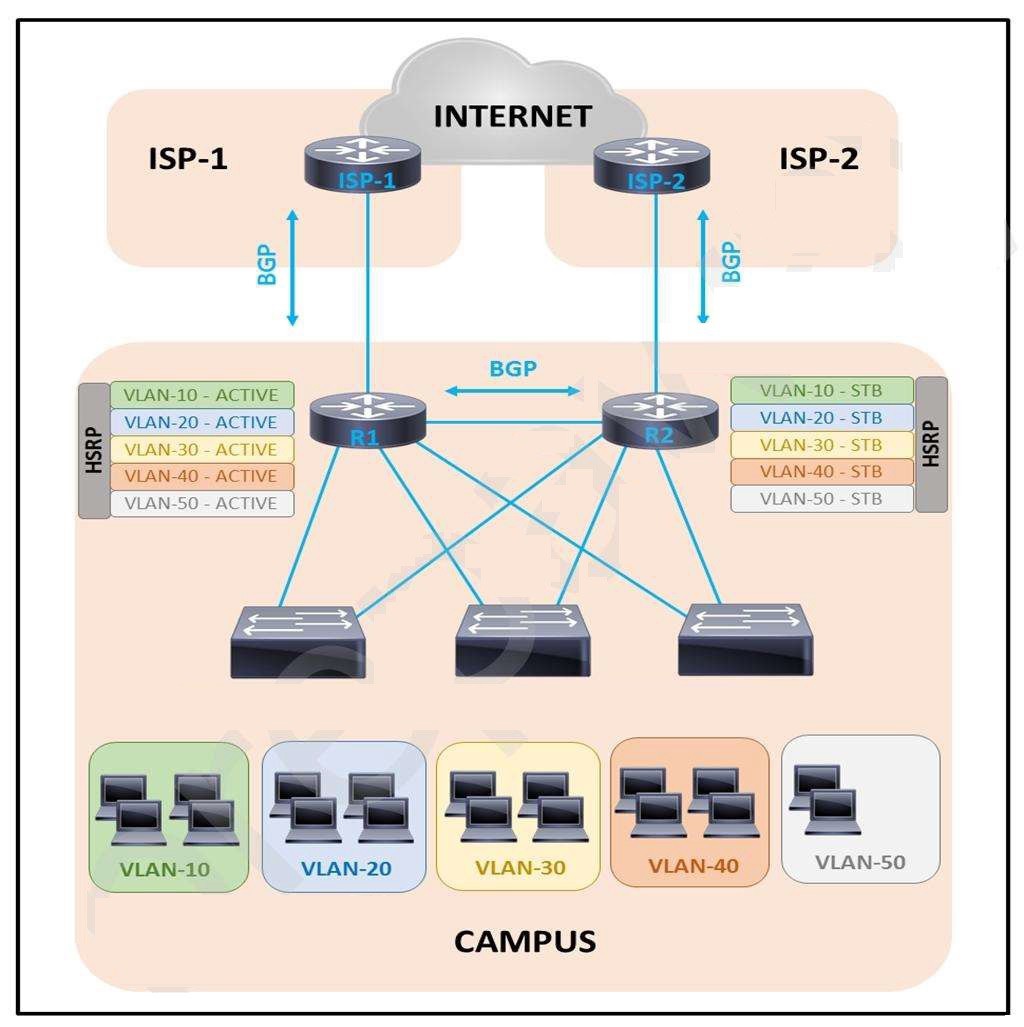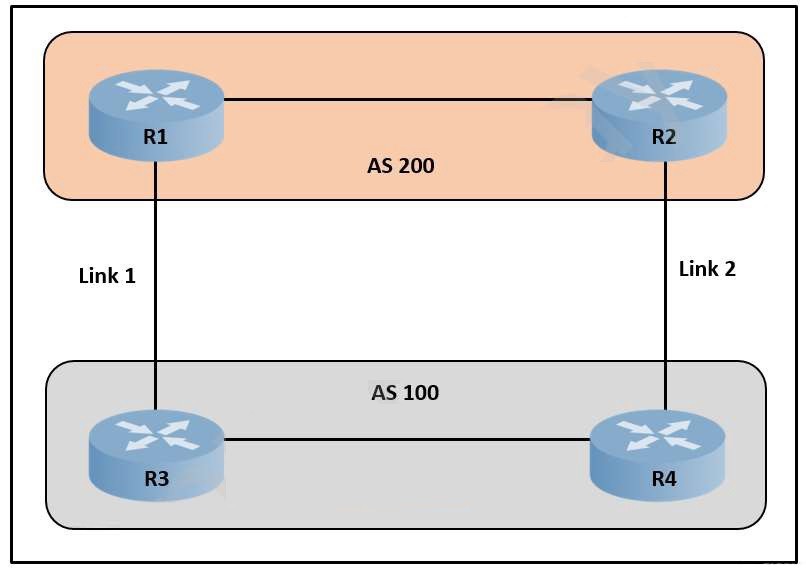
- Email support@dumps4free.com

Refer to the exhibit.
A customer is running HSRP on the core routers. Over time the company has grown and
requires more
network capacity. In the current environment, some of the downstream interfaces are
almost fully utilized, but
others are not. Which solution improves the situation?
A.
Make router R2 active for half of the VLANs.
B.
Add more interfaces to R1 and R2.
C.
Configure port channel toward downstream switches.
D.
Enable RSTP on the downstream switches.
Make router R2 active for half of the VLANs.
Which nonproprietary mechanism can be used to automate rendezvous point distribution in
a large PIM domain?
A.
Embedded RP
B.
BSR
C.
Auto-RP
D.
Static RP
BSR
Refer to the exhibit
C9ACDC725EA850EC2476EE1E
A network engineer is designing a network for AS100. The design should ensure that all traffic enters AS100 via link 1 unless there is a network failure. In the event of a failure, link 2 should function as the path for incoming traffic. Which solution should the design include?
A.
Modify the next-hop attribute on R3.
B.
Use AS-Path prepending on R3.
C.
Modify the next-hop attribute on R4.
D.
Use AS-Path prepending on R4
Use AS-Path prepending on R4
An infrastructure team is concerned about the shared memory utilization of a device, and
for this reason, they need to monitor the device state. Which solution limits impact on the
device and provides the required data?
A.
IPFIX
B.
static telemetry
C.
on-change subscription
D.
periodic subscription
on-change subscription
Explanation: There are two types of subscriptions: periodic and on-change. With periodic
subscription, data is streamed out to the destination at the configured interval. It
continuously sends data for the lifetime of that subscription. With on-change, data is
published only when a change in the data occurs such as when an interface or OSPF
neighbor goes down. https://developer.cisco.com/docs/ios-xe/#!streaming-telemetry-quickstart-
guide/streaming-telemetry
An engineer is creating a design to enable IPv6 to run on an existing IPv4 IS-IS network.
The IPv4 and IPv6 topologies will match exactly, and the engineer plans to use the same
router levels for each protocol per interface. Which IS-IS design is required?
A.
single topology without enabling transition feature
B.
single topology with transition feature enabled
C.
multi topology with transition feature enabled
D.
multi topology without enabling transition feature
multi topology with transition feature enabled
Explanation: https://www.cisco.com/c/en/us/td/docs/iosxml/
ios/iproute_isis/configuration/15-mt/irs-15-mt-book/ip6-route-multi-isis.html
| Page 7 out of 41 Pages |
| Previous |